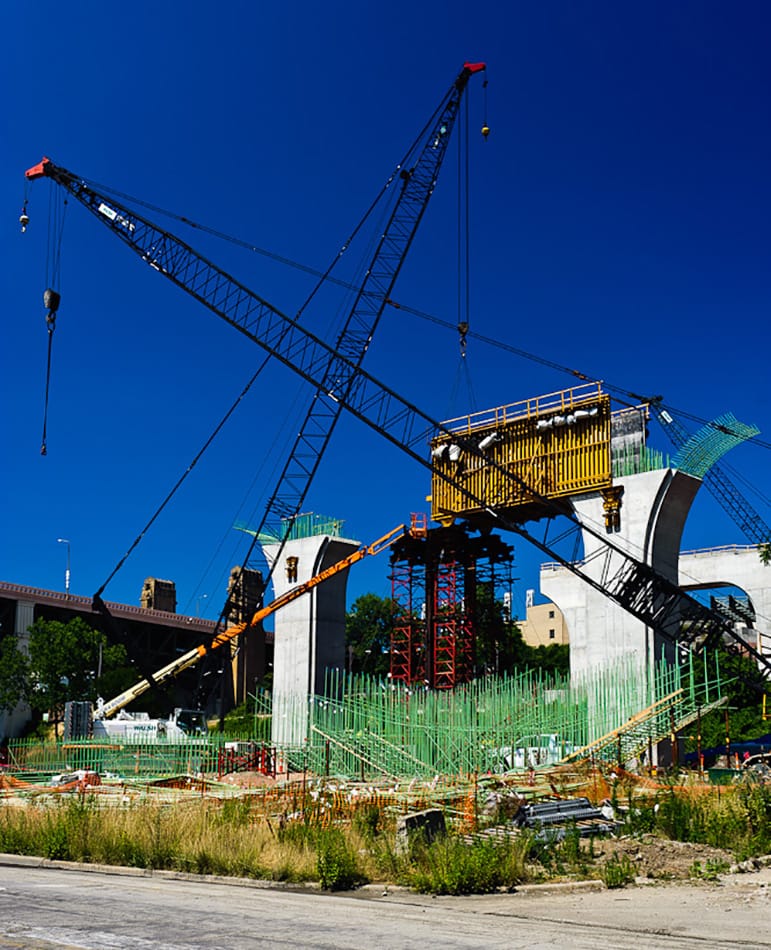
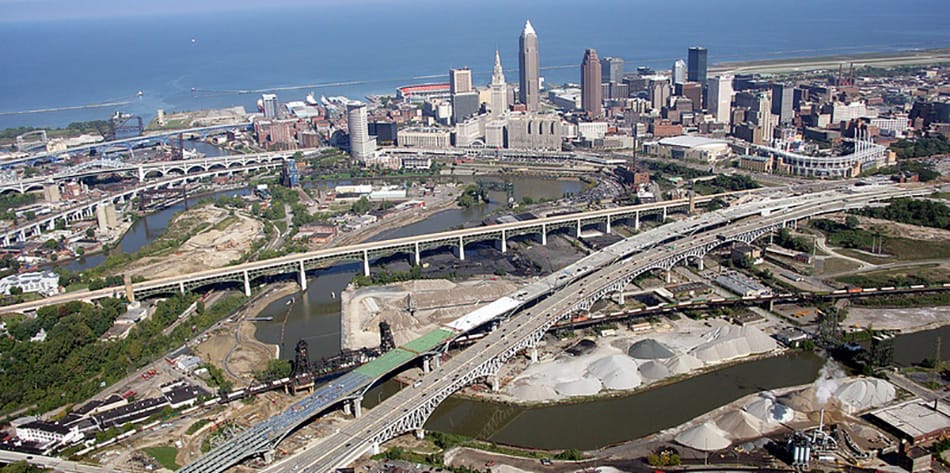
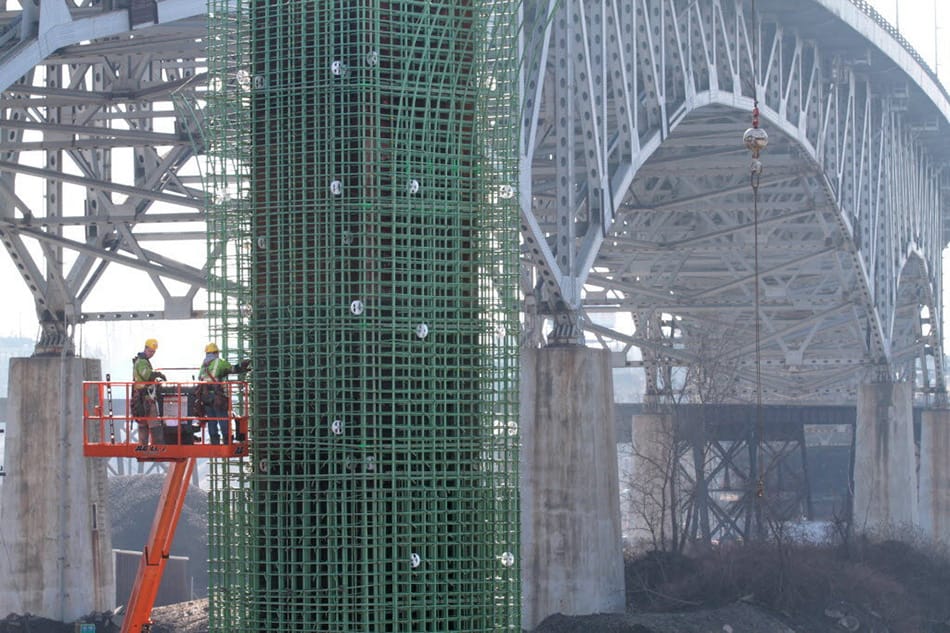
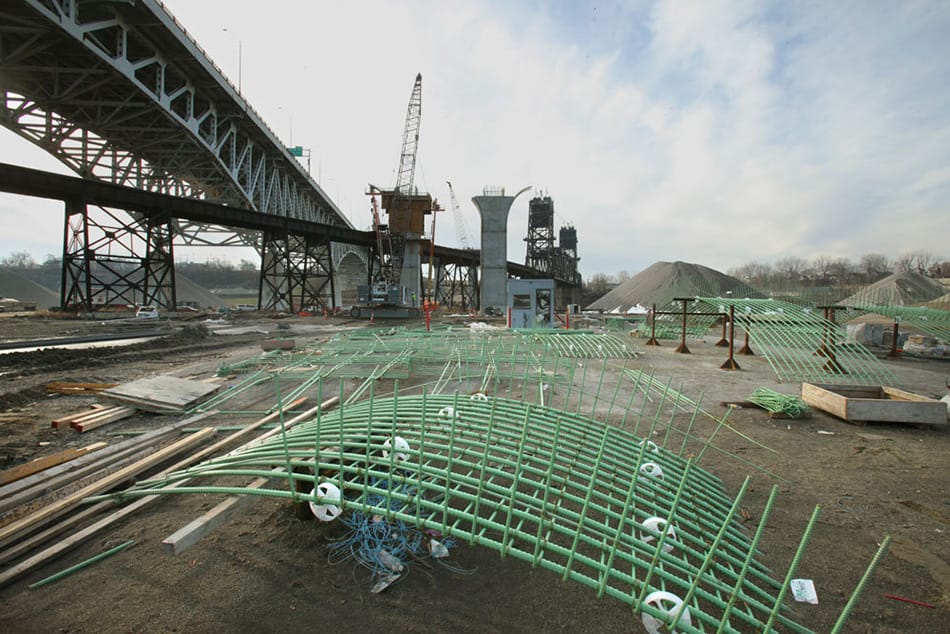


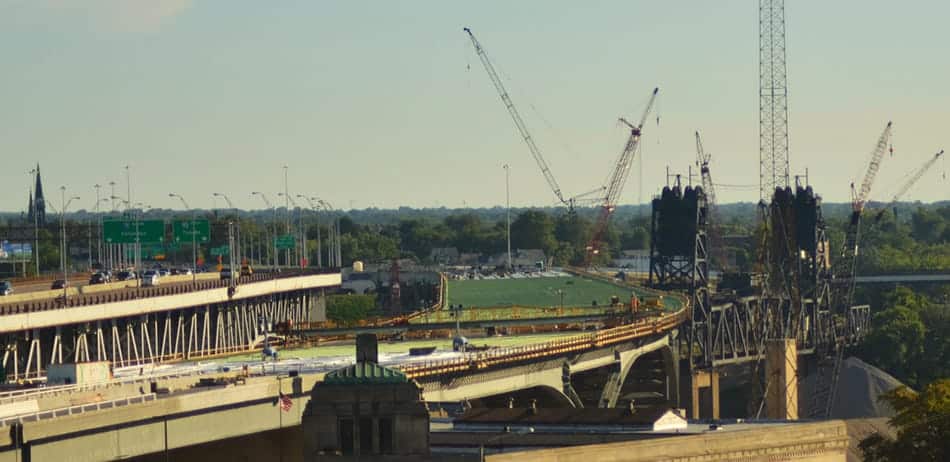
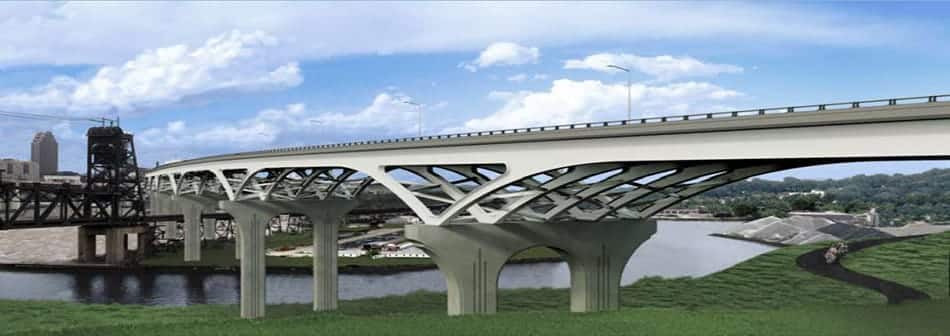
GEORGE V. VOINOVICH BRIDGE
Cleveland, OH
PROJECT DETAILS
- Design Criteria:
- Establish sustainability best practices including recycling.
- Capture public input for bridge design.
- Provide 75-year design life.
- Replace structurally deficient structure.
- Owner: Ohio Department of Transportation
- Engineer: HNTB Corp.
- General Contractor: Walsh Construction
- Epoxy-Coated Reinforcing Steel: 5500 ton
- Total Project Cost: $556 million
- Total Project Size: Length: 4247 ft
Width: 116 ft - Date Opened: Westbound, November 2013
Eastbound scheduled for 2016
In 2013, the 4,347-ft long westbound George V. Voinovich Bridge was opened to traffic. The new bridge is the first step in the Cleveland Innerbelt Modernization Plan, focused on improving safety, reducing congestion and traffic delays, and modernizing interstate travel along I-71, I-77 and I-90 through downtown Cleveland. This was the first major design-build project for ODOT. This project delivery method combines the design and construction of a project into one competitively bid contract.
This bridge replaced the original Cleveland Innerbelt Bridge that was completed in 1959. The bridge is supported by 14 piers reaching 120 ft over the Cuyahoga River at its highest point. The structure uses 5,500 tons of epoxy-coated reinforcing steel and will have a life expectancy of 75 years. It carries over 138,000 commuters each day and provides a vital link to downtown Cleveland.
ODOT undertook an extensive public involvement process during the enhancement process and hopes to capture the unique characteristics of the communities the new bridges touch. The design is intended to mimic the curves of other bridges in the river valley, utilizing steel – an important part of Cleveland’s industrial history. Public overlooks, green spaces, enhanced biking and walking facilities, additional parking, public art, and community gardens are provided around the structure.
The State’s largest transportation improvement project established best practices in roadway sustainability. The Federal Highway Administration selected the Cleveland Innerbelt Bridge project to pilot its Sustainable Highways Self-Evaluation Tool. HNTB and Walsh worked with ODOT to evaluate the system, which will serve as a set of best practices and allow transportation officials to integrate green components into future road and bridge programs. This program reports greenhouse gas emissions savings through the measures deployed in construction. This project will recycle more than 5 million pounds of steel.
The Innerbelt Bridge project is the largest of all the pilot program sites and was one of the most successful, earning a Gold Rating.